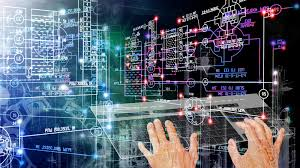Programming Language Basics:
- A programming language is a formal language used to write instructions that a computer can execute.
- It provides a set of rules and syntax for writing code that can be understood by both humans and computers.
- Programming languages can be categorized into different types, such as:
1. High-level languages: These languages are designed to be more human-readable and easier to understand. Examples include Python, Java, C++, and JavaScript.
2. Low-level languages: These languages are closer to the machine's hardware and provide more direct control over computer resources. Examples include assembly language and machine code.
3. Scripting languages: These languages are used for automating specific tasks or writing scripts. Examples include Python, JavaScript, and Bash.
4. Domain-specific languages: These languages are designed for specific applications or domains, such as SQL for database management or HTML/CSS for web development.
- Each programming language has its syntax, rules, and specific features that make it suitable for different types of applications.
Algorithm Basics:
- An algorithm is a step-by-step procedure or a set of instructions for solving a problem or accomplishing a specific task.
- Algorithms provide a logical sequence of operations that can be followed to solve a problem efficiently.
- Characteristics of a good algorithm include:
1. Correctness: The algorithm should produce the correct output for all valid inputs.
2. Efficiency: The algorithm should execute in a reasonable amount of time and use minimal resources.
3. Readability: The algorithm should be easy to understand and follow for humans.
- Algorithms can be represented using various methods, such as natural language, pseudocode, flowcharts, or programming languages.
- Common algorithmic concepts and techniques include:
1. Control structures: These determine the flow of execution in an algorithm, including sequence, selection (if-else statements), and iteration (loops).
2. Data structures: These define how data is organized and stored, such as arrays, lists, stacks, queues, and trees.
3. Searching and sorting: Algorithms for finding specific elements in a collection (searching) or arranging elements in a specific order (sorting), like linear search, binary search, bubble sort, and quicksort.
4. Recursion: A technique where a function or algorithm calls itself to solve a problem by breaking it down into smaller sub problems.
5. Time and space complexity: The analysis of an algorithm's efficiency in terms of the time it takes to run and the space (memory) it requires.
- Learning and understanding algorithms is essential for developing efficient and optimized programs and solving complex problems in computer science and software development.
Remember, programming languages provide the means to write algorithms and implement them as executable code. The choice of programming language depends on the task at hand, the requirements of the project, and personal preference.
Modern Trends in Computer Science:
1. Artificial Intelligence (AI) and Machine Learning (ML):
- Advancements in AI and ML have led to significant breakthroughs in areas such as natural language processing, computer vision, and autonomous systems.
- AI and ML are being applied in diverse fields, including healthcare, finance, robotics, and cybersecurity, to improve efficiency and decision-making.
2. Internet of Things (IoT):
- IoT refers to the network of interconnected devices embedded with sensors, software, and connectivity, enabling them to collect and exchange data.
-
The proliferation of IoT devices has led to the emergence of smart homes, smart cities, and industrial automation, with applications ranging from healthcare monitoring to intelligent transportation systems.
3. Big Data and Data Analytics:
- With the increasing volume, velocity, and variety of data being generated, there is a focus on leveraging big data and data analytics techniques to extract valuable insights.
- Data-driven decision-making, predictive analytics, and real-time data processing are becoming essential for businesses and organizations.
4. Cybersecurity and Privacy:
- As digital threats continue to evolve, there is a growing emphasis on cybersecurity and privacy measures to protect sensitive data and critical infrastructure.
- Advancements in encryption, authentication, and intrusion detection systems are being pursued to mitigate cyber risks.
5. Cloud Computing and Edge Computing:
- Cloud computing enables the delivery of computing resources and services over the internet, providing scalability, flexibility, and cost-efficiency.
- Edge computing brings computational capabilities closer to the data source, reducing latency and enabling real-time processing for applications like autonomous vehicles and smart grids.
6. Quantum Computing:
- Quantum computing explores the principles of quantum mechanics to perform complex computations at an unprecedented scale.
- It has the potential to solve complex problems that are infeasible for classical computers, such as optimization, cryptography, and drug discovery.
7. Blockchain Technology:
- Blockchain is a distributed and decentralized ledger that ensures secure and transparent transactions.
- It has gained popularity beyond cryptocurrencies, with applications in supply chain management, healthcare, finance, and digital identity verification.
8. Human-Computer Interaction (HCI) and User Experience (UX):
- HCI focuses on the design and interaction between humans and computers, ensuring usability, accessibility, and user satisfaction.
- UX design emphasizes creating intuitive, enjoyable, and engaging experiences for users across various digital platforms.
9. Mobile and App Development:
- Mobile devices and apps continue to dominate the digital landscape, with a focus on developing mobile-friendly and responsive applications.
- Mobile app development frameworks and technologies are evolving to meet the growing demand for mobile solutions.
10. Social and Ethical Implications:
- There is an increasing awareness and emphasis on addressing the social, ethical, and legal implications of technological advancements.
- Discussions around AI ethics, data privacy, algorithmic bias, and responsible AI development are gaining prominence.
11. Augmented Reality (AR) and Virtual Reality (VR):
· AR and VR technologies blend the physical and virtual worlds, creating immersive and interactive experiences.
· AR enhances real-world environments with digital information, while VR provides fully immersive virtual experiences.
· Applications include gaming, training simulations, architectural design, and healthcare.
These trends reflect the rapid progress and transformative nature of computer science, shaping various industries and influencing our daily lives. Keeping abreast of these trends is crucial for professionals and researchers in the field.










0 Comments